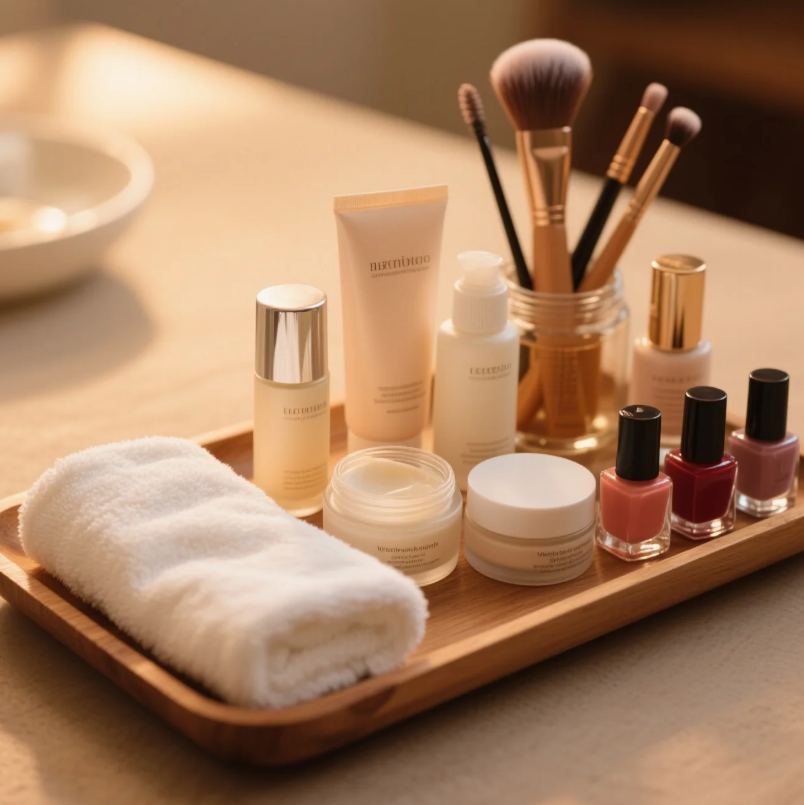Beauty standards vary greatly across cultures, but what’s truly fascinating are the unique and sometimes downright unusual beauty rituals that women practice globally. These rituals often have deep cultural roots and have been passed down through generations — some might seem strange to outsiders, but they hold powerful meanings and surprising benefits.
Today, we’re taking a global beauty journey to uncover some of the most unusual yet intriguing beauty rituals from different corners of the world. Ready to discover beauty secrets you’ve never heard of? Let’s dive in! 💄🌿
1. Snail Slime Facials in South Korea 🐌💧
South Korea is famous for innovative skincare, but one of its most unusual beauty ingredients is snail mucus.
What It Is
Snail slime is rich in glycoproteins, hyaluronic acid, and antioxidants that promote hydration, healing, and anti-aging.
Ritual and Benefits
Women use creams or masks containing snail secretion filtrate to soothe skin, fade acne scars, and boost collagen production. The ritual usually involves a multi-step routine combining gentle cleansing, exfoliation, and snail-based products.
2. Rice Powder for Skin Whitening in Southeast Asia 🍚✨
In countries like Thailand and the Philippines, rice powder has been a traditional beauty staple for centuries.
What It Is
Rice powder is finely milled, often mixed with turmeric or sandalwood powder.
Ritual and Benefits
Women apply the powder as a facial mask or body scrub to brighten skin, reduce oiliness, and protect from sun damage. It’s a natural exfoliant and helps even out skin tone.
3. Camel Milk Baths in Middle Eastern Cultures 🐪🛁
Camel milk is a revered ingredient for skin care in parts of the Middle East and North Africa.
What It Is
Rich in vitamins A, D, and E, camel milk has moisturizing and anti-inflammatory properties.
Ritual and Benefits
Bathing in or applying creams made from camel milk helps nourish dry skin, reduce wrinkles, and improve texture. Some luxury spas even offer camel milk baths as rejuvenation treatments.
4. Chimpanzee Toothpaste? — The Use of Miswak in Muslim Countries 🌿🦷
Miswak is a teeth-cleaning twig from the Salvadora persica tree, widely used in Muslim communities.
What It Is
Miswak has natural antibacterial properties.
Ritual and Benefits
Women and men use miswak to clean teeth and freshen breath. It’s a natural alternative to toothpaste and is also believed to improve gum health.
5. Lead-Based Makeup in Historical Japan and the Middle East ⚠️💄
Historically, women in Japan and parts of the Middle East used white lead-based powders to achieve pale, porcelain-like skin.
What It Was
The powder was made from lead, which is now known to be toxic.
Ritual and Cultural Context
Despite the dangers, pale skin was highly prized as a sign of nobility and beauty. Modern beauty has thankfully moved away from these hazardous practices.
6. The Burmese Thanaka Paste — Nature’s Sunscreen 🌳☀️
In Myanmar, the yellowish-white paste made from ground bark called thanaka is a daily beauty essential.
What It Is
Thanaka contains antioxidants and natural SPF properties.
Ritual and Benefits
Women and girls apply it in patterns on their face and arms, both for sun protection and a cooling effect. It also helps reduce acne and skin irritation.
7. Fish Spa Pedicures in Asia 🐟💆♀️
A quirky beauty ritual found in countries like Thailand and Japan, fish spa pedicures involve small fish nibbling dead skin off your feet.
What It Is
The tiny Garra rufa fish are known as “doctor fish.”
Ritual and Benefits
Stepping into a tank filled with these fish exfoliates feet naturally, improves circulation, and can be surprisingly relaxing.
8. Body Painting and Henna Tattoos in Africa and India 🎨🤲
Henna body art isn’t just decorative — it has beauty and cultural significance.
What It Is
Henna is a natural dye made from the Lawsonia inermis plant.
Ritual and Benefits
Beyond its stunning designs, henna cools the skin, improves texture, and is used during celebrations to enhance beauty and ward off evil spirits.
9. The Finnish Sauna and Birch Branch Ritual 🌿🔥
In Finland, sauna bathing is not just for relaxation but a whole beauty ritual.
What It Is
Birch branches (called vihta or vasta) are gently slapped on the skin during sauna sessions.
Ritual and Benefits
This boosts circulation, exfoliates dead skin cells, and leaves the skin feeling soft and refreshed.
10. Lip and Teeth Darkening in Some Indigenous Cultures 💋🖤
Certain tribes, such as the Apatani women of India, traditionally stain their lips and teeth black using natural dyes.
What It Is
The practice uses charcoal or plant-based dyes.
Ritual and Meaning
This unique ritual signifies beauty and identity within their culture, and while it may seem unusual, it’s a meaningful tradition passed down for centuries.
How to Incorporate Unusual Beauty Rituals Into Your Routine? 🌟
Interested in trying some of these global beauty secrets? Here are a few tips:
- Start Small: Experiment with safe, easy-to-find ingredients like rice powder or henna.
- Know Your Skin: Always patch-test new products to avoid allergies.
- Respect Traditions: Understand the cultural significance before adopting any ritual.
- Use Modern Alternatives: For risky rituals like lead-based makeup, look for safe modern products that offer similar benefits.
Beauty Beyond Borders 🌏💖
The world’s beauty rituals remind us how diverse and creative humans are when it comes to self-care. From snail slime facials in South Korea to Finnish sauna therapies, these unusual traditions highlight the deep connection between culture, nature, and beauty.
By embracing a few of these unique rituals — safely and respectfully — you can add an exciting twist to your beauty routine and celebrate global heritage while enhancing your skin and well-being.
Which unusual beauty ritual caught your eye? Share your thoughts and let’s celebrate beauty in all its wonderful forms! 💬🌸



